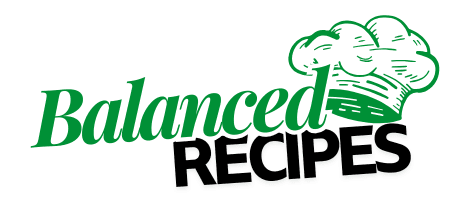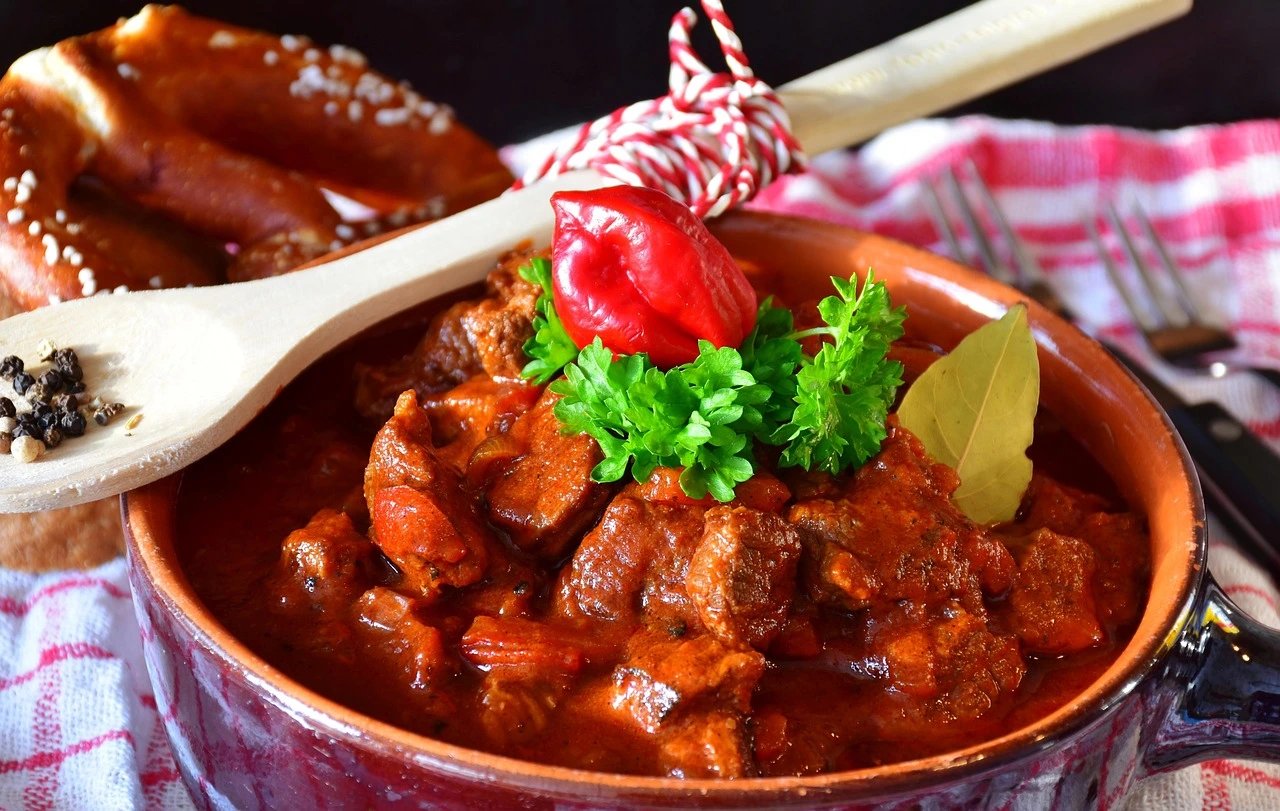Authentic Beef Goulash: Savor the Ultimate Comfort Food
There’s something magical about the moment when the rich aroma of paprika-infused beef goulash fills your kitchen. It takes me back to my grandmother’s small Budapest apartment, where I first watched her transform simple ingredients into a soul-warming masterpiece. The gentle simmer of the pot, the deep red color developing hour by hour—these memories aren’t just about food; they’re about family, heritage, and the comfort that comes from a dish that has nourished generations.
The Secret to Perfect Beef Goulash: Ingredients Breakdown
The Meat Selection
Your journey toward goulash perfection begins with selecting the right beef cut. Chuck or shoulder portions reward your patience magnificently, as their abundant collagen breaks down during slow cooking to yield remarkably tender morsels swimming in silken broth.
Look for pieces with visible marbling—these thin streams of fat melting gradually into the surrounding liquid infuse your goulash with unmatched richness. When preparing your meat, cut against the grain into evenly-sized 1-inch cubes to ensure consistent cooking throughout.
The Essential Spice: Hungarian Paprika
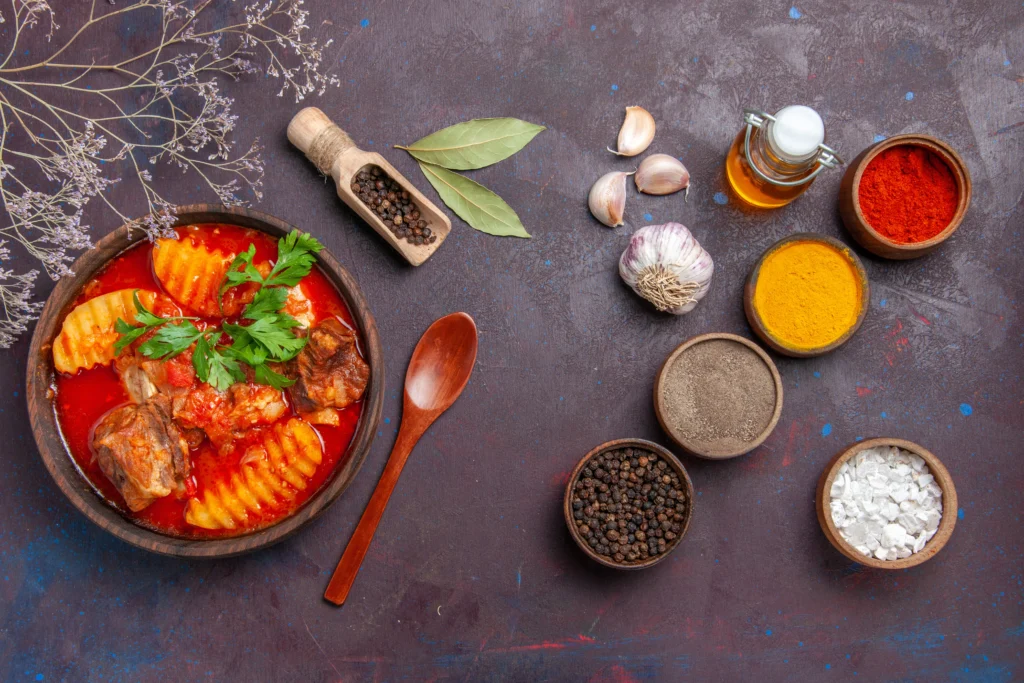
Hungarian paprika stands worlds apart from the dusty, flavorless variety often found languishing in supermarket spice aisles. Authentic Hungarian paprika comes in eight distinct grades, ranging from különleges (special quality, sweet) to erős (fiery hot).
For classic beef goulash, sweet Hungarian paprika (édes) delivers the quintessential flavor profile—bright, fruity notes with subtle warmth rather than aggressive heat. Store your precious paprika in an airtight container away from light and heat to preserve its vibrant character.
Traditional Beef Goulash Recipe
Ingredients
| Ingredient | Amount | Notes |
|---|
| Beef chuck | 2 pounds | Cut into 1-inch cubes |
| Hungarian paprika | 3 tablespoons | Sweet variety preferred |
| Yellow onions | 2 large | Finely diced |
| Garlic | 4 cloves | Minced |
| Caraway seeds | 1 teaspoon | Lightly crushed |
| Bell peppers | 1 red, 1 green | Sliced into strips |
| Tomatoes | 2 medium | Diced |
| Beef broth | 2 cups | Low sodium |
| Bay leaves | 2 whole | Whole |
| Vegetable oil | 2 tablespoons | For browning meat |
| Salt and pepper | To taste | For seasoning |
| Hungarian wax peppers (optional) | 2 | For authentic heat |
Step-by-Step Cooking Process
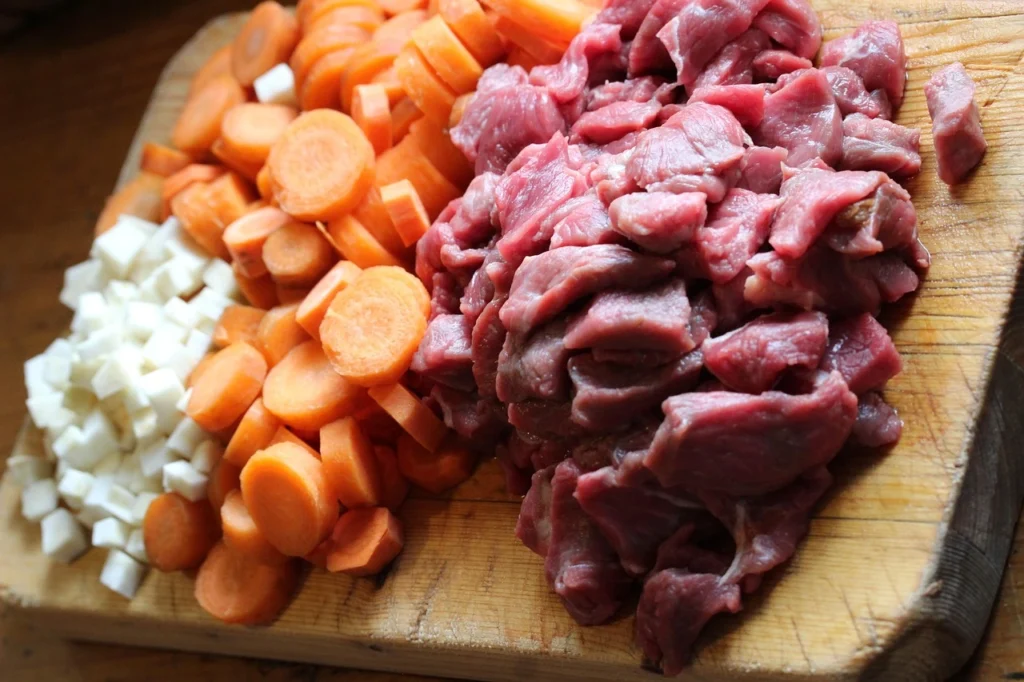
The transformation of simple ingredients into extraordinary goulash hinges upon technique. Begin by heating oil in a heavy-bottomed Dutch oven until shimmering. Work in batches to brown your beef cubes—overcrowding causes steaming rather than caramelization, robbing your dish of essential flavor development.
Once your meat develops a gorgeous crust, set it aside and add finely diced onions to the same pot. Allow them to soften and turn translucent before introducing the minced garlic and caraway seeds. When their aroma rises from the pot, reduce heat slightly before adding your paprika—the crucial moment where magic begins.
Stir continuously for 30 seconds as the paprika blooms in the fat, releasing its essential oils. Return the browned beef to the pot, add tomatoes, bell peppers, bay leaves, and pour in just enough broth to barely cover the meat. Bring to a gentle simmer, then reduce heat, cover partially, and allow time to work its wonders—approximately 2-3 hours until beef surrenders to perfect tenderness.
Regional Variations of Beef Goulash
As this cherished recipe traveled beyond Hungary’s borders, fascinating regional adaptations emerged. Austrian goulash often incorporates more tomatoes and sometimes a touch of wine, while Czech variations might include marjoram or thyme. German interpretations frequently add potatoes directly to the pot rather than serving them alongside.
Despite these variations, the soul of beef goulash—that distinctive paprika-forward profile—remains unmistakable across Central Europe.
Serving and Pairing Your Beef Goulash
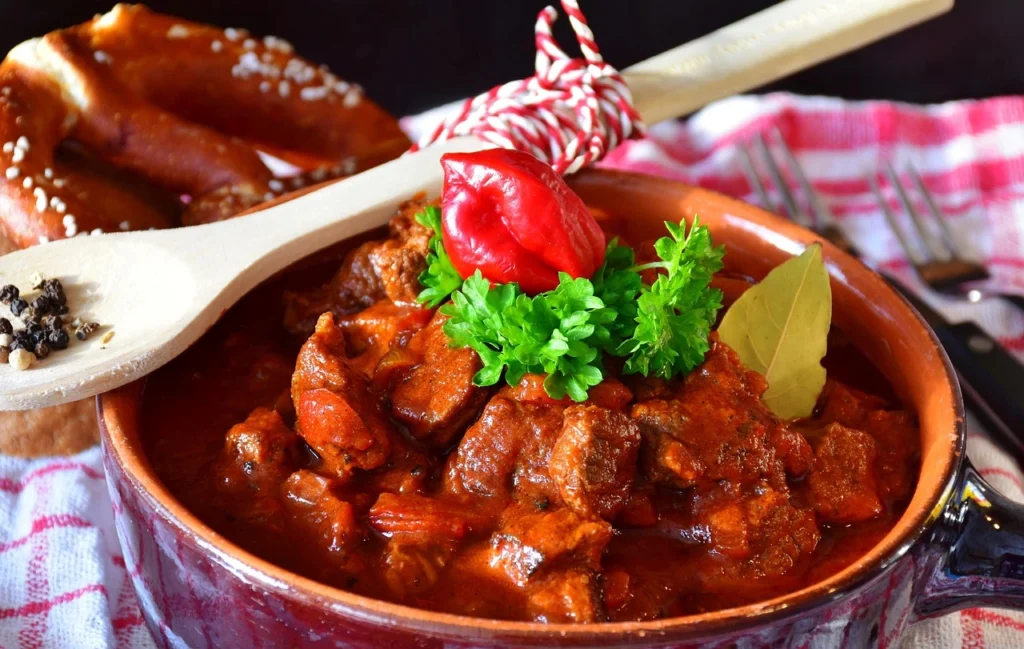
Traditional accompaniments elevate your goulash experience to new heights. Nokedli (Hungarian egg dumplings similar to spätzle) excel at capturing the flavorful sauce, while boiled potatoes offer comforting simplicity. For bread lovers, nothing surpasses chunks of rustic rye bread for sopping up the last precious drops.
When selecting wines, opt for medium-bodied reds with good acidity to complement the richness—Hungarian Kékfrankos (Blaufränkisch) makes an especially harmonious regional pairing.
Modern Twists on Classic Beef Goulash
Contemporary home cooks have adapted this timeless recipe for modern conveniences without sacrificing authenticity. Your slow cooker transforms goulash into an effortless weeknight meal—simply complete the browning and paprika-blooming steps on the stovetop before transferring everything to your slow cooker for 6-8 hours on low.
For plant-based adaptations, portobello mushrooms provide remarkably satisfying substitutes for beef, mimicking its meaty texture while absorbing the characteristic paprika flavors brilliantly.
More Than Just a Meal
Beef goulash represents the heart of Central European cooking—a dish that has transcended borders and generations while maintaining its essential character. Whether you’re seeking connection to Hungarian heritage or simply a comforting meal for cold weather, this classic stew delivers both nourishment and a taste of history in every spoonful.
Why not gather your ingredients this weekend and create your own goulash tradition? Your kitchen will fill with intoxicating aromas, your taste buds will dance with delight, and perhaps you’ll begin your own story with this remarkable dish that has sustained generations of food lovers across continents.
FAQ About Beef Goulash
What cut of beef is best for authentic beef goulash?
The most traditional beef goulash recipes call for beef chuck or shoulder, as these cuts have enough fat and connective tissue to become tender during the long simmering process.
Is beef goulash supposed to be soupy or thick?
Authentic Hungarian beef goulash falls somewhere between a soup and a stew—thicker than a typical soup but not as thick as what Americans might consider a stew.
Can I make beef goulash ahead of time?
Like many stews, beef goulash actually improves with time as the flavors meld together. Making it a day ahead can enhance the taste tremendously.
What’s the difference between beef goulash and beef stew?
The primary difference lies in the seasoning—beef goulash relies heavily on paprika for its distinctive flavor and color, while traditional beef stews often use a wider variety of herbs.
How spicy should authentic beef goulash be?
Traditional beef goulash has a rich, deep paprika flavor but isn’t particularly spicy. The heat level can be adjusted by using different types of paprika or adding Hungarian wax peppers.
